If you love spicy flavors and Italian food, you’ve probably already heard of Calabrian chili peppers.
They are a variety of red chiles from Southern Italy, and they’re the most important ingredient in many traditional recipes.
The reason is that they have a nice balance of spiciness, aromas, and nutritional values – which makes them good for spicing pasta and other dishes, but also a perfect choice for making chili paste and sauces. They are also used to flavor oil and vinegar (more on that later).
Here at Mortadella Head, everybody loves Calabrian chili peppers. I’ve been growing them at home for a while, and I’m very fond of my little plants.
But hey, there are so many types of peppers, and it’s hard to know them all. So, if you’ve never heard of Calabrian chili peppers, today I’m gonna tell you everything about this Italian variety and give you some food advice. Let’s start!
What are Calabrian Chili Peppers?
Let’s start with the basics.
Calabrian chili peppers are a variety of a species known as Capsicum Annuum. This makes them the Italian cousins of other famous varieties such as jalapeños, Cayenne, and serrano peppers.
Their official Italian name is Peperoncino Calabrese.
They owe it to the Calabria region (Italy’s toe), where they’ve been cultivated since the 16th century.
They were probably imported there by Spanish and Arab visitors/merchants after Christopher Columbus brought them to Spain. There, they found good soil and a climate suitable for growth and became an essential ingredient of local traditional dishes.
Calabrian chiles are so loved, that they have their own yearly festival. The “Chili Pepper Festival” is held every year in September and hosts courses about Calabrian peppers and tastings, as well as contests and live performances.
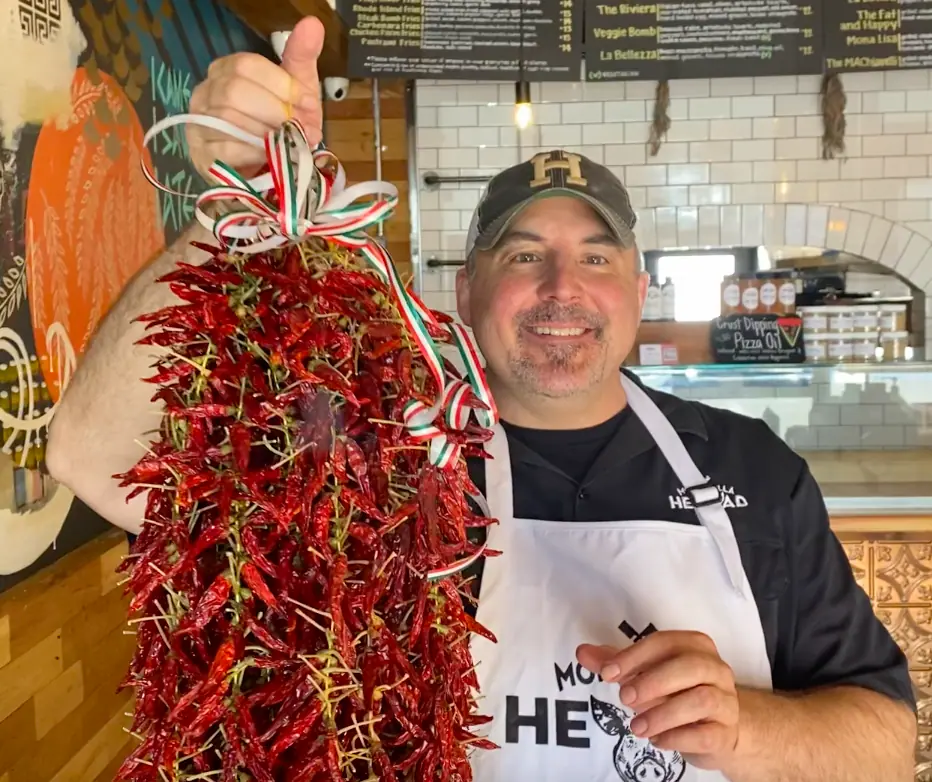
Types of Calabrian Chilli Peppers
There are many types of Calabrian chili pepper – each with it’s own name.
It’s a common mistake to consider those name as mere synonyms, but they actually represent different types of chiles, which have different qualities and levels of spiciness.
The most notable are:
- diavolicchio – their name means “small devil”. I think it’s a perfect way to describe them. They are a little smaller than other Calabrian chili peppers, and they are the spiciest type.
- peperoncini a mazzetto – “bunch peppers”. The reason for this name is that, unlike most Capsicum Annuum varieties, these Calabrian peppers grow in bunches.
- peperoncino tondo calabrese – this type of pepper has a round shape and is very similar to Cherry Bomb peppers. It is traditionally used to make stuffed chili peppers. We’ll see more about that later.
- naso di cane – a mild type of Calabrian chili peppers that produces big red fruits shaped like a dog’s nose.
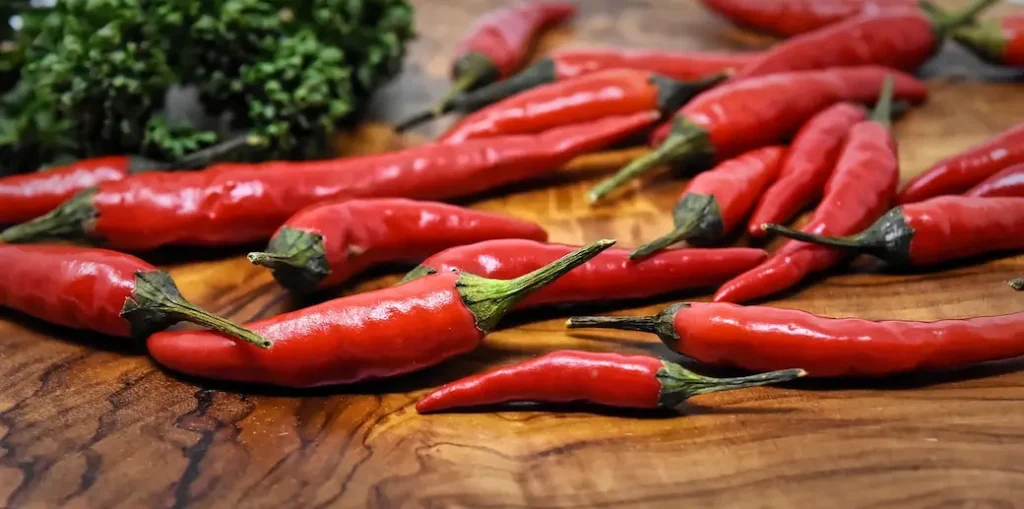
What Do They Look Like?
Most types of Calabrian chili peppers are 1 to 2 inches long. Some specific fruits, like naso di cane peppers, can get as long as 2,75 inches.
With the exception of tondo calabrese peppers (which look like cherry tomatoes), they have a slight, conical shape, which can be curved.
When they bloom, they are green or yellow-ish, but with time they develop a rich red color (much like Acrata/Goat’s Weed peppers). Traditional growers usually let them age on the vine until they show a slightly wrinkled exterior, which means that they’re fully ripe.
They grow in clusters on small plants that produce beautiful white flowers. This makes them a very nice home decoration.
I usually keep my plant outside in the summer – it gives my front door a whole new look. And when I bring it back inside in the fall, it makes my office so much brighter.
If you’re looking for an original domestic plant, you should try that. Just make sure your plant gets enough sunlight!
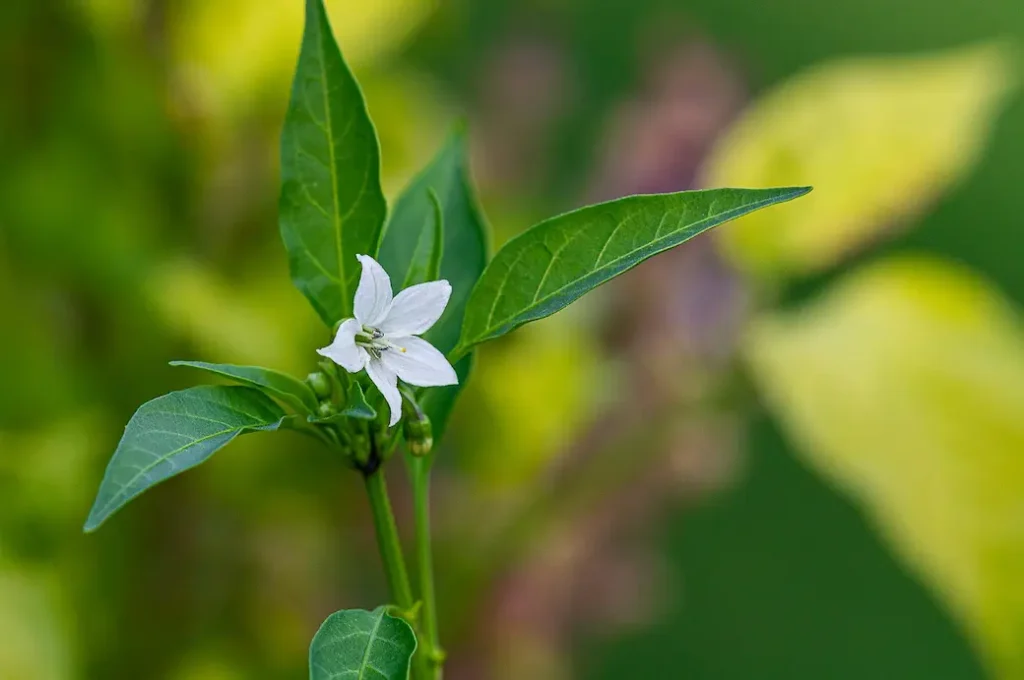
How Spicy are They?
Most types of Calabrian chili peppers have a moderate spiciness (about 20,000 – 30,000 Scoville Heat Units on the Scoville scale).
This means that they are around 10 times hotter than jalapeño peppers (2,500 – 8,000 SHU) and a little less hot than a fresh Cayenne pepper (30,000 – 50,000 SHU).
They won’t give you an immediate or intense burn. They will rather fill your mouth with a nice, warming heat after the first bites.
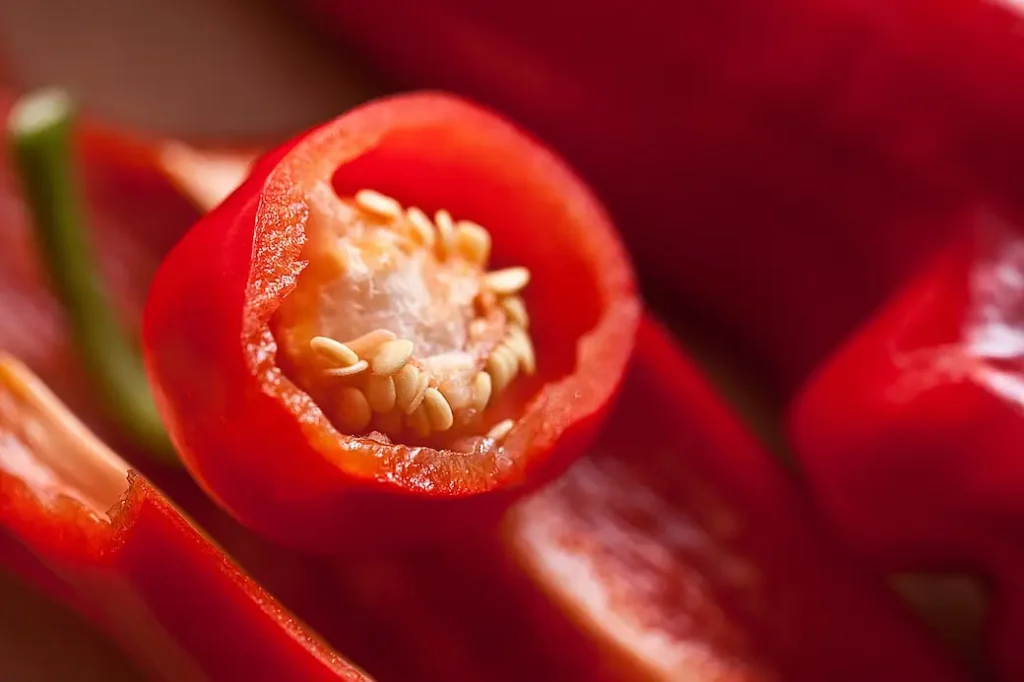
However, there are milder and hotter types.
For instance, naso di cane and tondo calabrese peppers usually range around 3000 – 10.000 SHU. Diavolicchio peppers, on the other hand, are usually above 50.000 SHU.
Much depends on the type of soil and the amount of light and water used.
Some claim that a good diavolicchio can reach up to 150.000 SHU, if it is cultivated well. Is it true? I guess the only way to check that is to try as many chili peppers as you can 😉
Speaking of that…
What do Calabrian Chili Peppers Taste Like?
Calabrian chiles have a fruity taste, with some smoky flavors. This makes them a perfect ingredient for chili sauces, or for pasta dressings and ragouts.
Their moderate spiciness will accentuate all the other aromas in your food. Let’s see all the ways you can enjoy them.
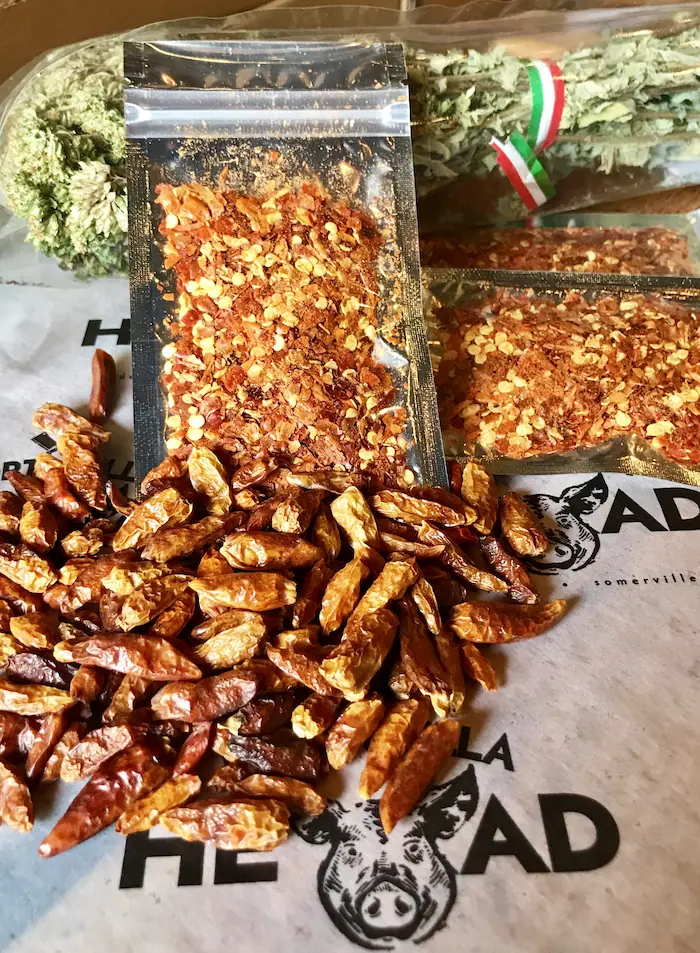
Behind the Harvest: How Calabrian Chilis Are Grown
Calabrian chilis are a symbol of Southern Italy’s rich farming traditions. Thriving in Calabria’s sun-soaked fields, these peppers benefit from nutrient-rich soil and a Mediterranean climate.
A Seasonal Journey
Planting begins in spring, with farmers carefully preparing the soil. By late summer, the peppers ripen to a vibrant red, ready for harvest. Many growers still handpick them to preserve the plants, and sun-drying is a time-honored method to enhance their flavor.
Sustainability in Farming
Modern farmers embrace sustainable practices, like crop rotation and organic pest control, to protect the land. These efforts ensure Calabrian chilis retain their authentic taste and remain a cherished regional product for generations.
What to eat with Calabrian Chili Peppers?
Calabrian chili peppers have many applications, whether cooked, raw, or dried.
Traditionally, they are used to season first courses and cured meats like nduja (a local type of spreadable meat that I highly recommend) and soppressata di Calabria.
They are also used to make Calabrian chili oil, which is one of the things I love most in the world. I use it on pasta and meat whenever I have some, and I think that a bruschetta with chili oil and crispy pepper flakes makes a perfect afternoon snack.
Another great traditional seasoning made with them is Calabrian chili paste, a spicy cream made of chiles, salt, and oil, which can be used on sandwiches or grilled vegetables.
And if you like stuffed chili peppers, take some tondo calabrese, cut them on the top, remove their seeds, and fill them with tuna or anchovies. It’s a typical Calabrian summer dish.
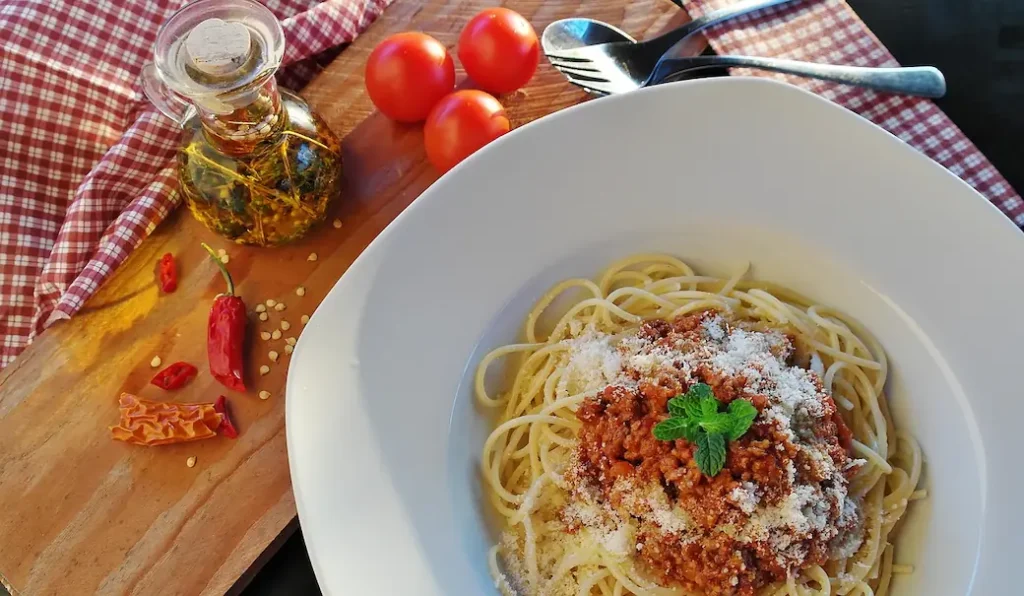
Then, of course, you can also use Calabrian peppers to season any pasta dish.
They are indeed the most important ingredient in a very famous Italian meal: pasta all’arrabbiata. You can use them as a powder, or stir-fry them in oil and tomato sauce.
Many people also use them to make chili jams and spicy cakes.
Finally, when raw, Calabrian chili peppers taste very good with chocolate and hummus. There is really no limit to how you can use chili peppers, and the people from Southern Italy know that really well.
Here are some additional ideas for pairing these versatile peppers:
- Cheese Boards: Add a spicy kick to creamy cheeses like burrata or ricotta. The smoky heat of Calabrian peppers complements the richness of the cheese perfectly.
- Grilled Vegetables: Drizzle Calabrian chili oil over grilled zucchini, eggplant, or asparagus for a bold and flavorful twist.
- BBQ Marinades: Blend chili paste with olive oil, garlic, and lemon juice for a marinade that works wonders on chicken, pork, or shrimp.
- Pizza Toppings: Sprinkle Calabrian chili flakes or use chili oil to elevate your favorite pizza, especially one topped with sausage or roasted peppers.
- Cocktails: Add a pinch of chili powder to a Bloody Mary or create a chili-infused simple syrup for margaritas with a kick.
Want to know another yummy way to use diavolicchio chiles? Next time you make some coffee, spray on it some whipped cream mixed with chili powder and enjoy.
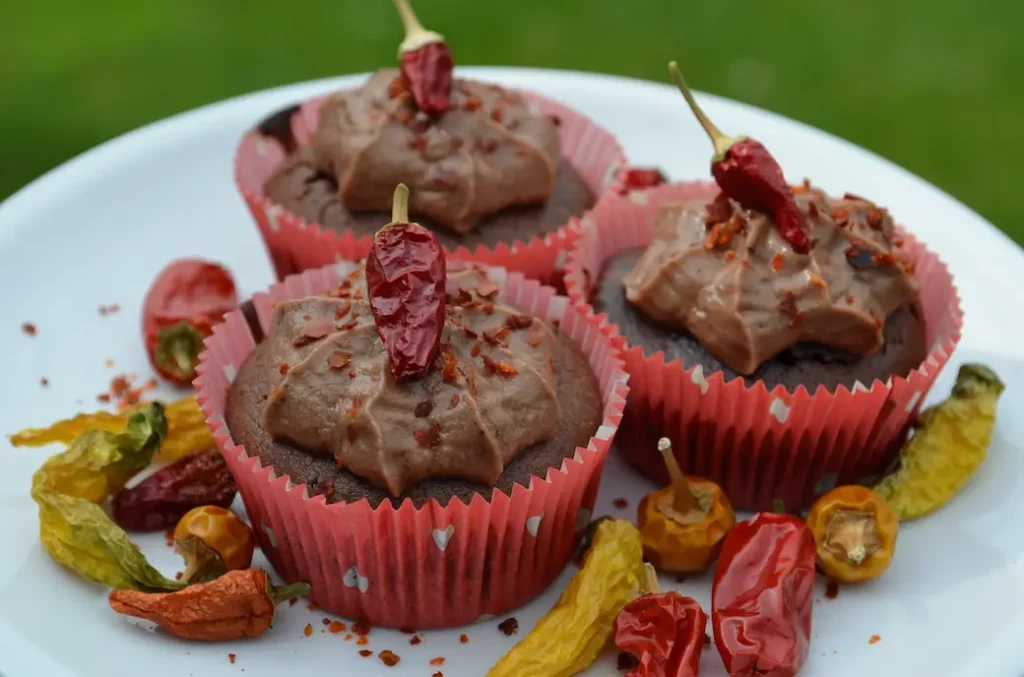
This was nearly everything you need to know about Calabrian chili peppers and their use in Italian cuisine.
But maybe you have some other questions related to their storage and health benefits. So let’s cover these two aspects as well.
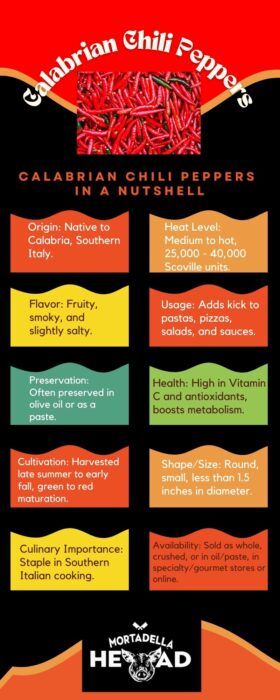
Are They Good for the Health?
As I wrote before, Calabrian chili peppers have a moderate spiciness (about 30,000 SHU on the Scoville scale) and a fruity, smoky flavor, but these are not the only features for which they should be praised.
Their nutritional values make them a very healthy spice. Calabrian chili peppers are, indeed, rich in vitamins A, B-6, and C. They also have high quantities of potassium, iron, magnesium, and capsaicin – a chemical compound good for circulation and digestion. And finally, they are renowned for having antibacterial and anti-inflammatory properties.
However, they’re not a magic formula and can have some downside effects too.
Eating too many chili peppers (not only the Calabrian ones) can cause a burning sensation and stomach pain. Moreover, some researches suggest that excessive consumption of capsaicin may increase the chances of developing cancer.
So, it’s always better not to exaggerate and to taste this treat with moderation.
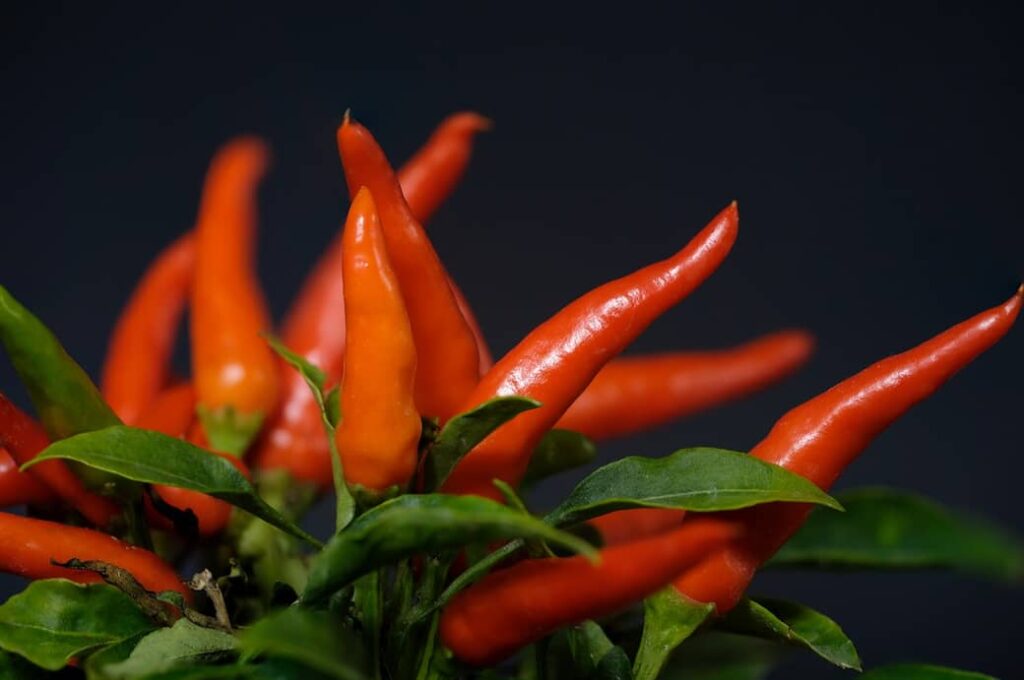
How to Store Calabrian Chili Peppers?
If you’ve just bought or picked some Calabrian chiles and don’t want to eat them all at once, here’s how to preserve them.
If you’re planning on eating them all within 3 weeks to a month, you can store them in the refrigerator. This will allow you to make them last longer than if you left them at room temperature.
However, it’s always good to open them and check that they are not rotting before using them. If the seeds are turning black, or if you notice any dark spots, I recommend not eating them.
I personally prefer to pick them straight from the plant (or buy them) in the amount I need and eat them fresh, but there are other ways.
(For instance, someone in the comments pointed out that you can simply freeze them as you pick them – a much simpler solution that will mantain their freshness for longer.) 😀
Another great way to store Calabrian chili peppers for a long time, is to dry them at a low temperature and then keep them them (whole, crushed, or turned into powder) in a closed container away from humidity. With this method, you can get some fantastic homemade chili seasonings.
Anyway, if you do decide to try it out, I recommend that you use a dehydrator, as it can take days to dry a diavolicchio well. This way you’ll be sure that you’re doing everything correctly and avoid unwanted mold growth. Here’s a more complete article on how to properly dry chili peppers.
Finally, many people store Calabrian chili peppers in oil or vinegar. However, if you decide to do it at home, you should educate yourself about the botulinum risk in oil preserves/canning and learn all the ways to prevent it. If you wish, I’ll be happy to point you to reliable sources in the comments.
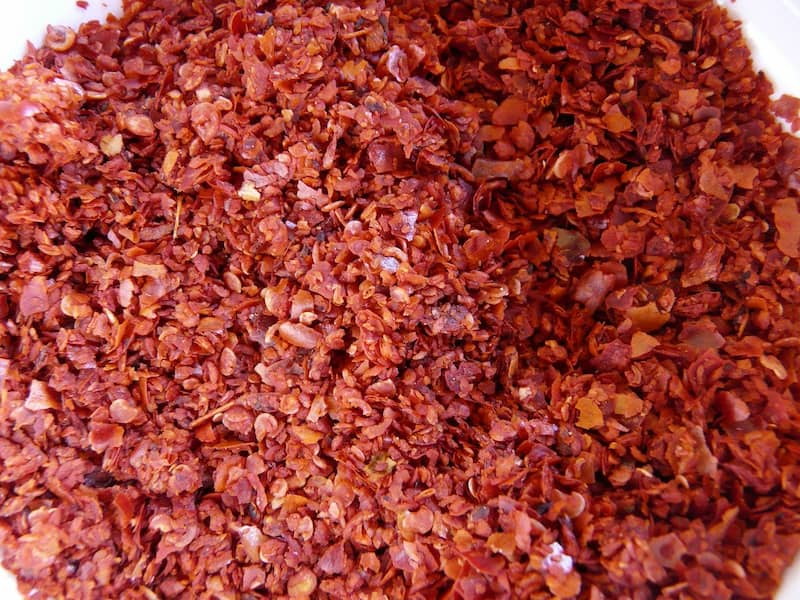
DIY Guide: Growing and Caring for Calabrian Chili Plants
Love Calabrian chilis? Grow them at home for fresh, flavorful peppers and a beautiful addition to your garden.
Getting Started
Choose high-quality seeds labeled as Peperoncino Calabrese or Diavolicchio. Plant them in well-draining soil and place in a sunny spot that gets 6–8 hours of light daily.
Care Tips
- Watering: Keep the soil moist but not soggy.
- Pest Control: Use neem oil or natural sprays to ward off pests.
- Maximizing Yield: Prune regularly and mulch around the base to retain moisture.
Harvest and Enjoy
In about 80–100 days, your chilis will be ready to harvest. Use them fresh, dried, or as a base for homemade chili paste, and enjoy the satisfaction of seasoning your meals with homegrown heat.
Substitute for Calabrian Peppers
If you can’t find Calabrian chili peppers, here are some alternatives that can serve as a good substitute:
Crushed Red Pepper Flakes: These are widely available and can provide a similar heat level. They don’t have the same smoky, fruity flavor, but they will work in a pinch to add spiciness to dishes.
Fresno Chili Peppers: Fresno peppers are similar to Calabrian chili peppers in terms of heat. They are a bit more tangy and less smoky, but can work well as a substitute, especially in fresh applications.
Serrano Peppers: Serranos are hotter than Calabrian chili peppers but can be used if you’re looking for a significant kick. Their flavor is more green and less fruity.
Peperoncino: These Italian chili peppers are quite similar in terms of heat and flavor profile. They can be used in whole, flake, or oil form, much like Calabrian peppers.
Aleppo Pepper: While milder, the Aleppo pepper offers a sweet and slightly smoky flavor that can mimic the depth of the Calabrian pepper’s taste.
Remember, when substituting peppers, consider both the heat level and the flavor profile to make sure it fits with your specific recipe.
FAQs About Calabrian Chili
Can I use Calabrian chili in desserts?
Yes! Calabrian chili pairs surprisingly well with chocolate, making it a great addition to spicy chocolate truffles or hot cocoa. Sprinkle chili powder over whipped cream for an extra kick.
What wine pairs best with dishes featuring Calabrian chili?
For dishes using Calabrian chili, try pairing with a medium-bodied red wine like a Chianti or a fruity white like Vermentino. These wines balance the chili’s heat without overpowering its flavor.
Are Calabrian chili peppers easy to grow at home?
Yes, they thrive in sunny spots and well-drained soil. Make sure to protect them from frost in colder months. They’re both functional and decorative, thanks to their vibrant red fruits and white flowers.
How can I incorporate Calabrian chili into breakfast?
You can add Calabrian chili paste to scrambled eggs, sprinkle chili oil on avocado toast, or mix powdered chili into pancake batter for a unique spicy twist.
What are creative ways to use leftover Calabrian chili paste?
Stir it into soups, spread it on sandwiches, mix it into dips, or use it as a marinade for meats and vegetables.
Our Recipes with Calabrian Chili Peppers
And to end on a high note, here are some of our recipes in which you can use Calabrian chili peppers!
- Spicy Aioli: Calabrian Chili Pepper Mayo;
- Sauteed dandelion greens;
- The Authentic Amatriciana Pasta Recipe;
- The Screaming Sicilian;
- Pasta with ‘Nduja & Ricotta Cheese;
- Easy Roasted Broccoli Rabe Recipe;
- Penne All’Arrabbiata;
- Easy Pepperoni Pizza Lasagna;
- Spicy Rigatoni Alla Vodka.
If you want some more, just ask me in the comments and I’ll be happy to share them on this blog.
I hope you found this post useful, and that I made you wish to taste some of the foods I mentioned.
And if you have some chili advice for me, please let me know. I’ll be happy to try it out! 😉

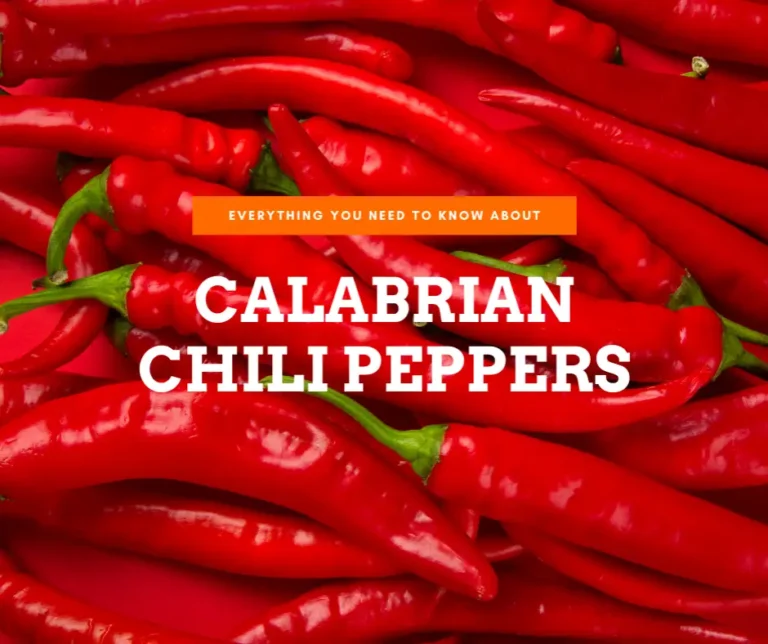


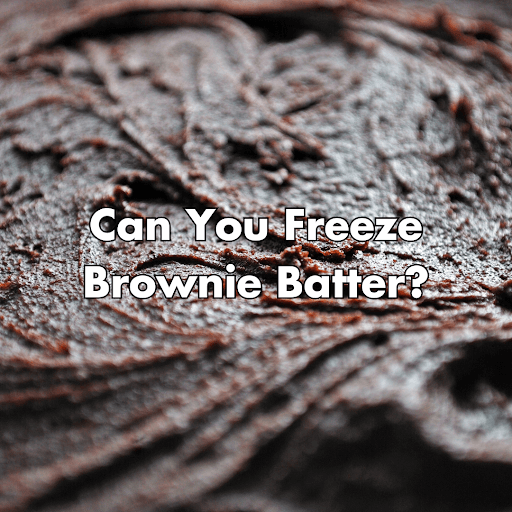
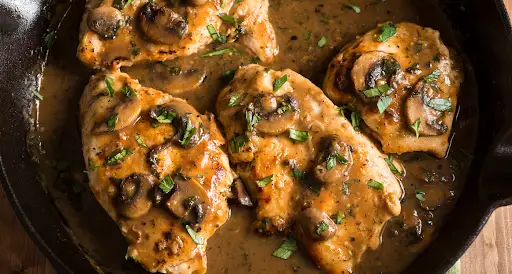
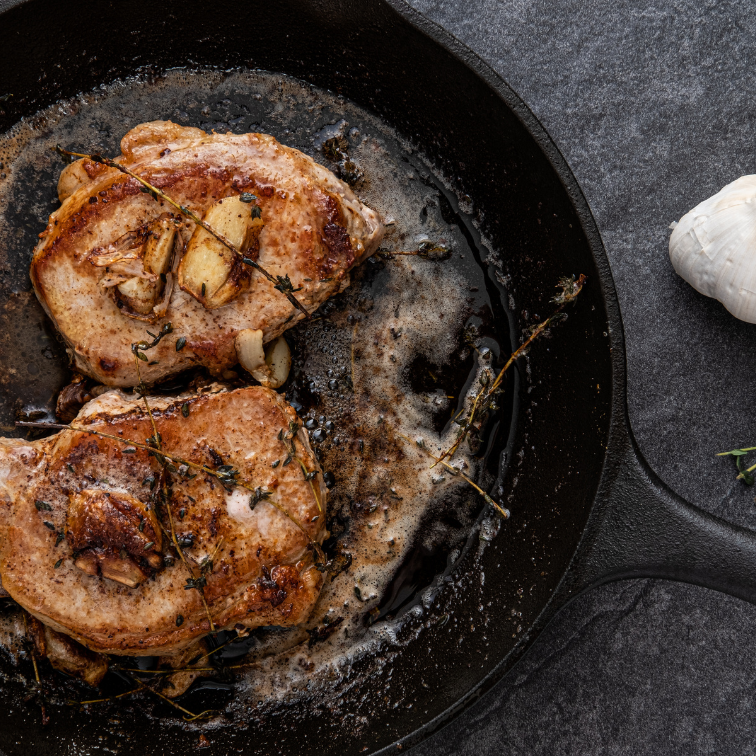

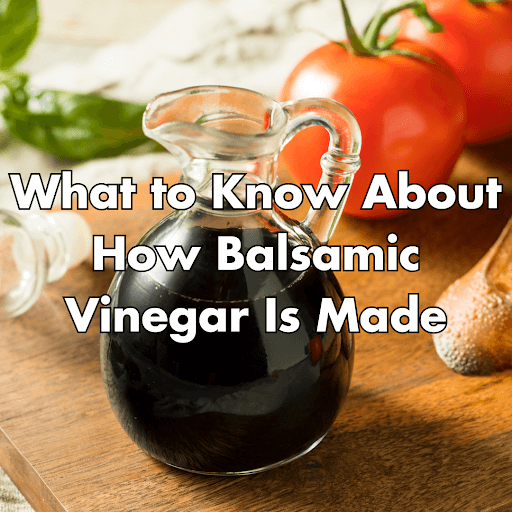
23 Responses
Where can I find Calabrian pepper seeds to plant, preferably the longer conical variety, but still true Calabrian.
Thanks
Hi Steve,
you could try looking on the english section of semistrani.it – they’re a small seller from Tuscany, and I know they ship internationally. They sell all the varieties I mentioned in this post, and the “calabrese a mazzetti” could be the one you’re looking for.
Unfortunately I don’t know any reliable local seller in the US. And even here in Italy, many people actually sell personal hybrids or Acrata seeds, pretending they’re Calabrian. As a result I’m very diffident of any online shop or big seller, but this one has been recommended to me by people I trust and I’m quite satisfied with the plants I’m growing from their seeds.
I purchase all of my seeds – Calabrian peppers included – from Seeds from Italy.
https://www.growitalian.com/
Hi David. Thanks for sharing this one, I’ll look into it.
Hey michele.
Do you know of a good Calabrian chili producer in Italy?
I would like to look into importing them to the US.
Hi Lenny. The sellers that I trusted closed during covid, and since I’ve been growing my chili for a while I haven’t looked up for new ones. If you’d still like to try out some Calabrian chili products, try buying some from Natale Laurenzano on his online shop (labottegatipica.it). If, on the other hand, you’re looking for a seed vendor to start growing Calabrian Chili in your area, you should check out Semi Strani by Carlo Martini (semistrani.it). I’ve cultivated many varieties that I got from Carlo and he’s my trusted seller.
I found Calabrian peppers here.
Use the search feature, they have four types.
https://www.chileplants.com/search.aspx?Search=True&SearchButton=&SearchMode=simple&SpeciesCode=&Letter=&Keyword=CALABRIAN&CategoryID=1&HeatID=&TypeID=&UseID=&SizeID=&FleshID=&FoliageID=&OrientationID=&HeightID=&SeasonID=&DeterminancyID=&Heirloom=&Location=&Color=&Page=1&LengthID=&WidthID=&StockStatusID=1,3,4&NewProduct=False&ImageHeader=
Oddly enough, I came across this seller that claims to have gotten their original seeds via MH:
https://sherwoodsseeds.storenvy.com/products/34166413-calabrian-ristra-pepper-italian-piccante-calabrese-spicy-pepper-of-calabria
Unbelievable! 😀 😀 😀
To maintain their freshness, you can pick them and put them in the freezer right away. Once you plan on using them you take them out and chop them up while they’re still frozen and use them for whatever you want.
You’re right, I should have remembered that 😀 I’ll edit the post, thanks for pointing that out!
Hi,
I’m wondering what the process is to make the crushed calabrian chili paste that I have purchased online. Are those peppers usually roasted first?
Hi,
I’m wondering if you know how some of the commercially available calabrian chili pastes are produced? It seems like they are roasted and then packed in oil. Is that right? Do you know a recipe?
Thanks!
Adam
Hi Adam. To be fair, I never looked up how commercial chili pastes are made. The homemade recipes I know usually involve blending dried chili peppers with olive oil, herbs and spices, and then sauteeing everything for a few minutes. I guess commercial ones are made in a similar way, with more preservatives.
Yesterday I was looking at some videos on how to use a new type of chilies that I am trying to grow at home, and I saw that many people like to ferment fresh peppers for a few days before blending, but I never tried this method.
I think that drying the peppers is always a good practice if you’re mixing them with oil. Oil can create a botulin-friendly environment and must be used with care. However, if you plan on finishing your paste right away or within 4-5 days, you can use fresh chilies.
Hi Adam,
Which variety do you typically use to make the Calabrian Chili Oil? Also, can you share a particular method to flavor the oil?
I always try different varieties. When I see them in the store I’ll buy them. Here is an article with more info of what to expect when you are using Calabrian chili peppers. When I make a chili oil I will warm some olive oil on the stove, not hot enough to fry, but warm. Then I add the dried peppers and let them flavor the oil slowly. Transfer it to a jar and add some good oregano if you want.
Hello there. I enjoyed your article on Calabrian chili peppers. I have been growing several plants most of the summer and they are just about ready to harvest. I would like to preserve them, pickle or oil. You mentioned a source for preserving? I can’t seem to find a good recipe that I can safely preserve. Thank you again. Sincerely, Darla K
Hi Darla. Here are some interesting reads:
– https://anrcatalog.ucanr.edu/pdf/8004.pdf
– https://extension.oregonstate.edu/food/preservation/preserving-peppers-sp-50-454
Preserving chili peppers in oil can be a little tricky because, although botulin risk is very low, the only 100% safe method that I know of involves using a professional autoclave… which is not something you see everyday in a home kitchen 😀 Since I am a little anxious about these things, I prefer to get my chili oil from a friend who lives in a small town where they have a community autoclave, and to either freeze or consume the ones I grow while they’re still fresh. However, I know many people that make their chili oil in less careful ways, and they’ve never had an issue. The methods suggested in these sources are very good, and if you follow the instructions thoroughly and take all the necessary precautions you should be ok.
I see mention of heat level and shape however nothing about any difference in flavor between the varieties. Do they all taste the same?
Hi David. From my experience, Calabrian varieties are not that different in taste. If well grown, they all have a fragrant taste, and you’ll sense distinct fruity notes alongside with the spiciness.
Do you have a newsletter that you send in email?
Yes, we do. You can find the application form by scrolling down after the end of the posts on mobile. It’s below the author’s box.
Michelle, I have sourced different Calabrese peppers from across the web including the one you listed. My family is from Calabria, and I grow a heritage garden with mostly
Calabrese seeds, I keep track of the municipalities and places these seeds hail from. I was wondering if you could let me know the origin of the source for the Calabrese ristra peppers you did the giveaway on years back, as I was able to plant and grow the peppers from the seeds of this giveaway.